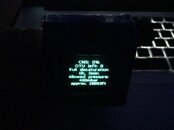MB:
But it is worth an extra note of caution... It is common advice that the last dive before boarding a plane should be a shallow dive. Well... maybe... Many divers figure that because the last dive is shallow they will stretch is out. Bad idea. The shallow vs deep decision is about maximizing tissue loads, but most divers make this recommendation without discussion the TYPES of tissues that are being loaded. In general, deep dives load fast tissues; shallow dives tend to load slow tissues. Fast to load also means relatively fast to UNload. And slow to load also means slow to UNload. Frankly, if the computer allows, I'm more likely to hit a shorter deeper dive for the last one than to max out the shallow dive. Just because you dive to 30' for a gazillion minutes does not mean you will off gas faster than a deeper dive under the NDLs!
Using my
spreadsheet and plugging in the numbers for a 30 ft 120 minute dive and a 80 ft. 5 minute dive the difference in tissue compartment (TC) loading was insignificant. After a SI of 18 hours all TC's were the same except for TC's 11-16 using the DSAT table. Here are the numbers (pressure absolute in feet of sea water):
Depth: TC's 1 - 16
30: 24.4, 24.4, 24.4, 24.4, 24.4, 24.4, 24.4, 24.4, 24.4, 24.4, 24.6, 24.7, 25.0, 25.2, 25.2, 25.3
80: 24.4, 24.4, 24.4, 24.4, 24.4, 24.4, 24.4, 24.4, 24.4, 24.4, 24.5, 24.5, 24.6, 24.7, 24.7, 24.8
As a point of reference the surface pressure for N2 is 24.4 fsw.





